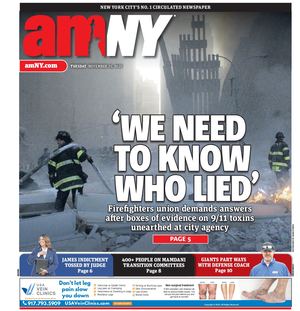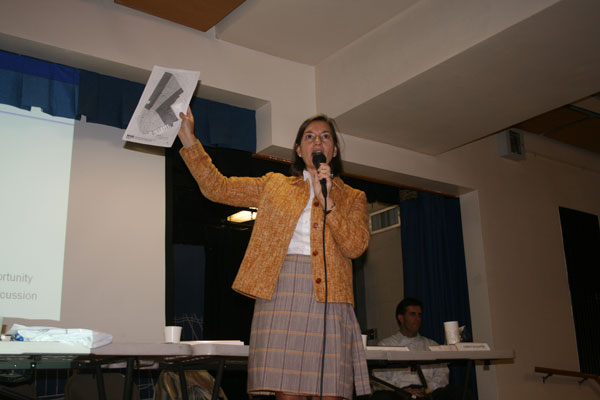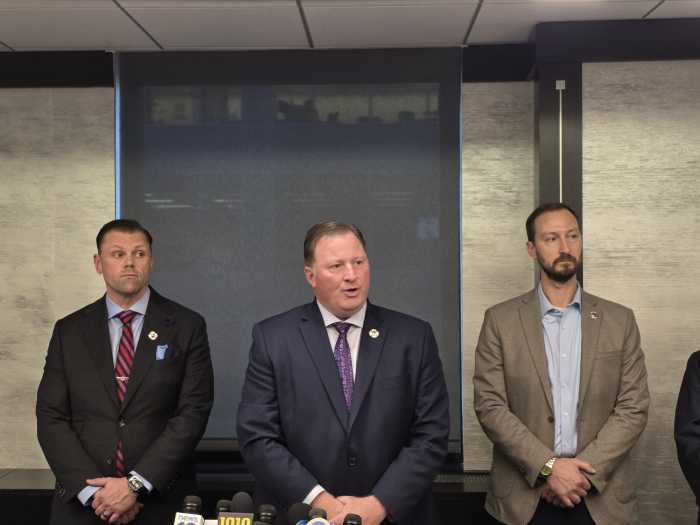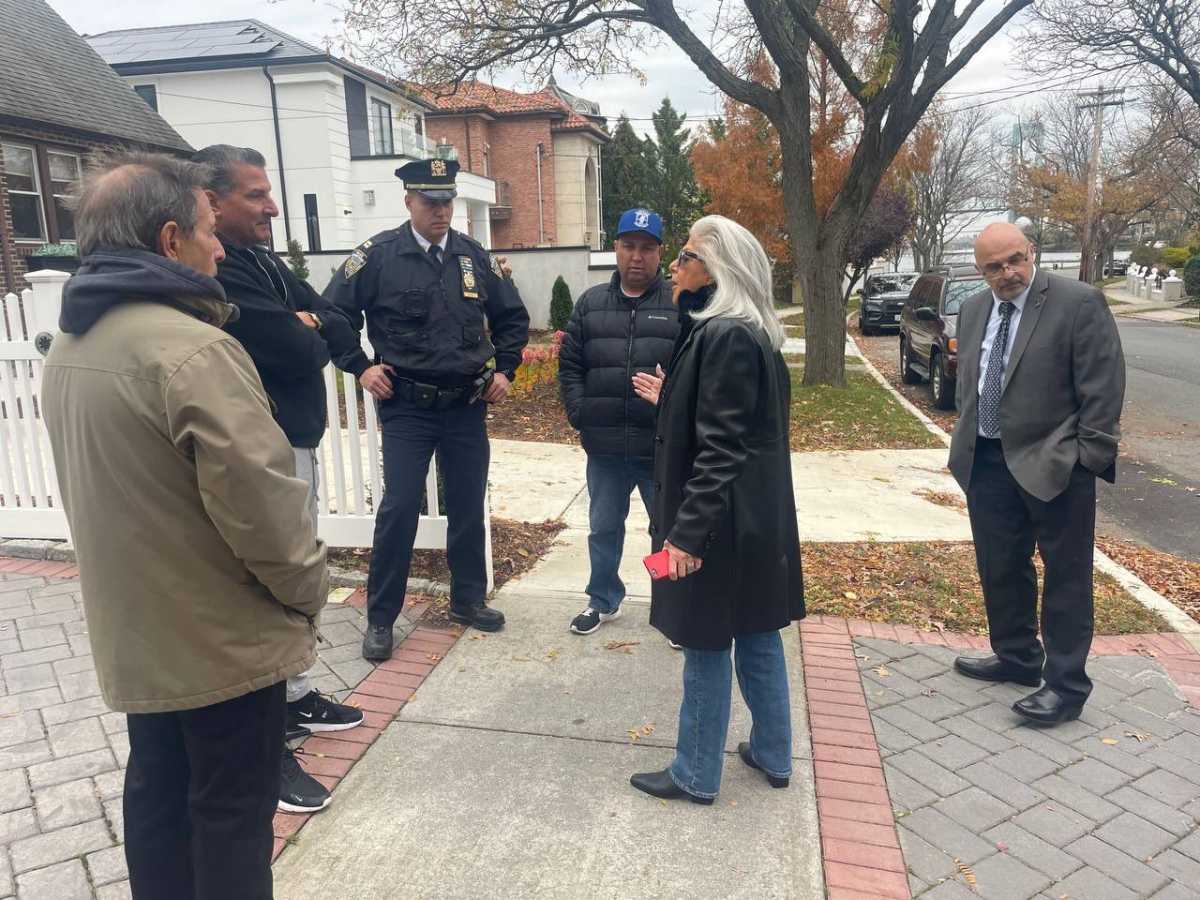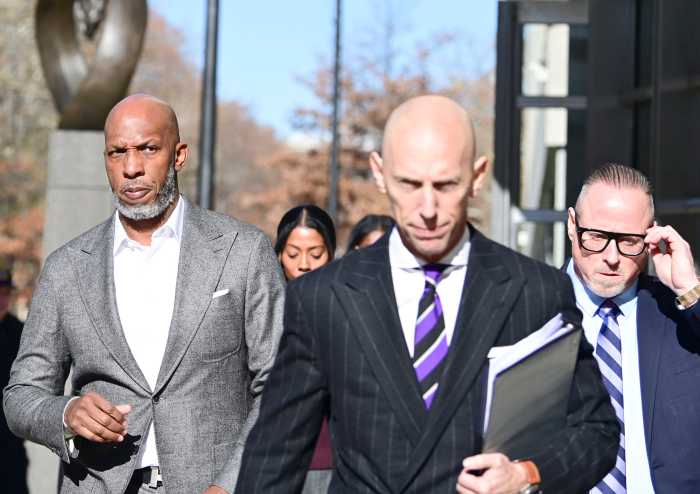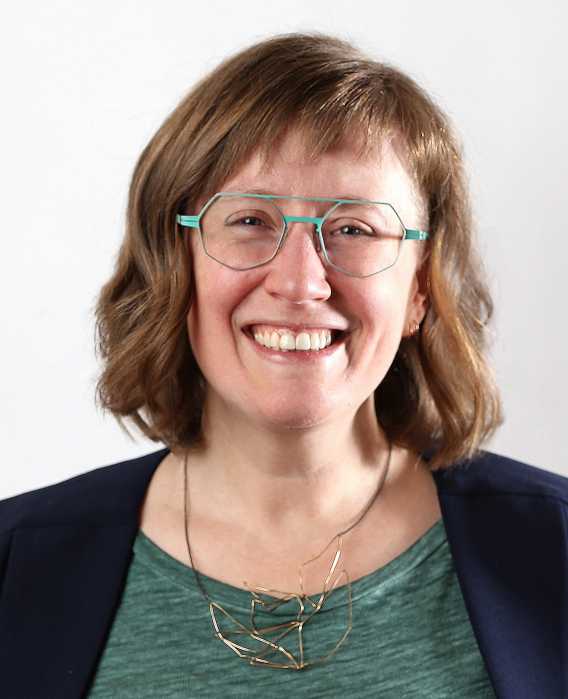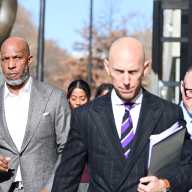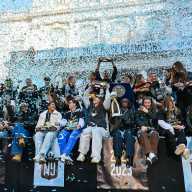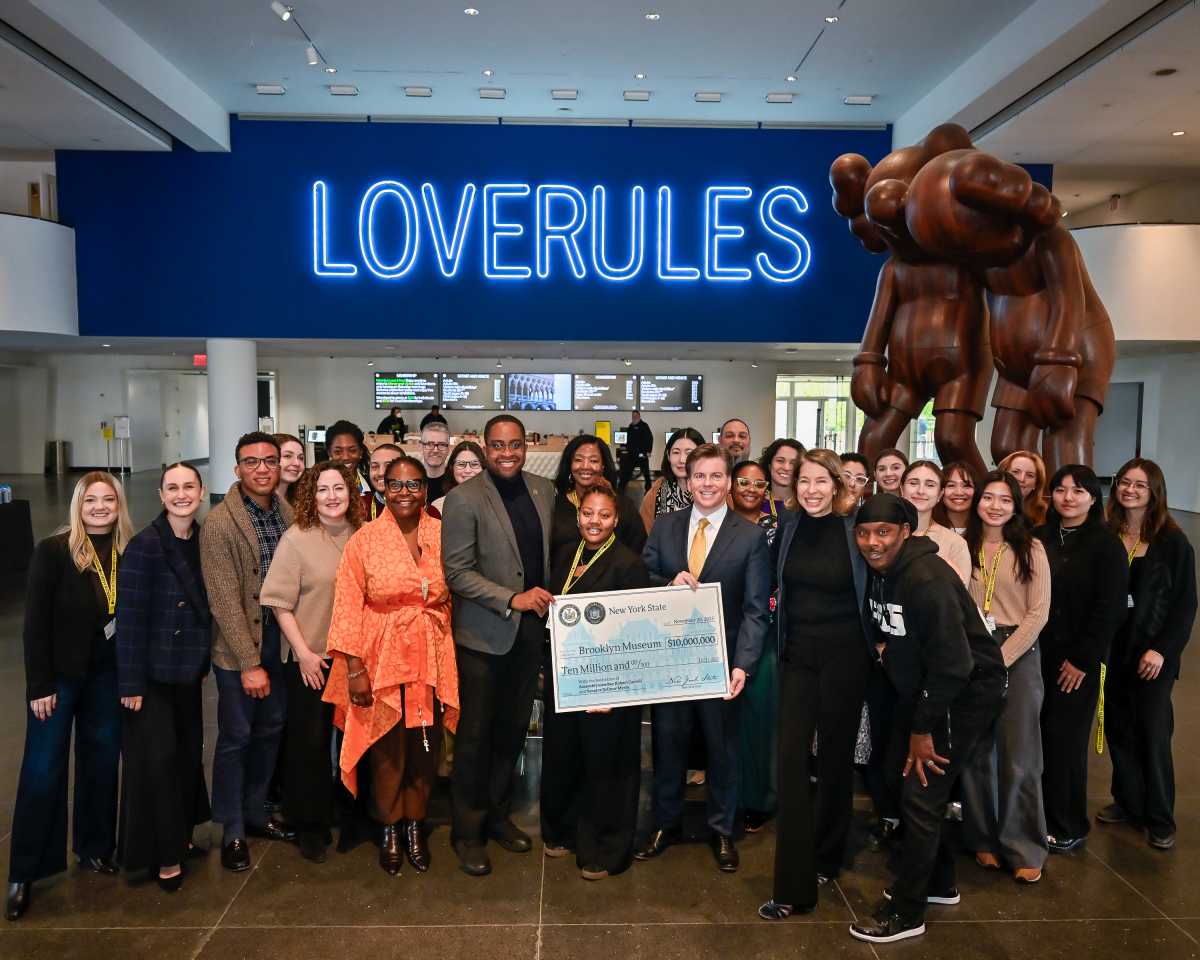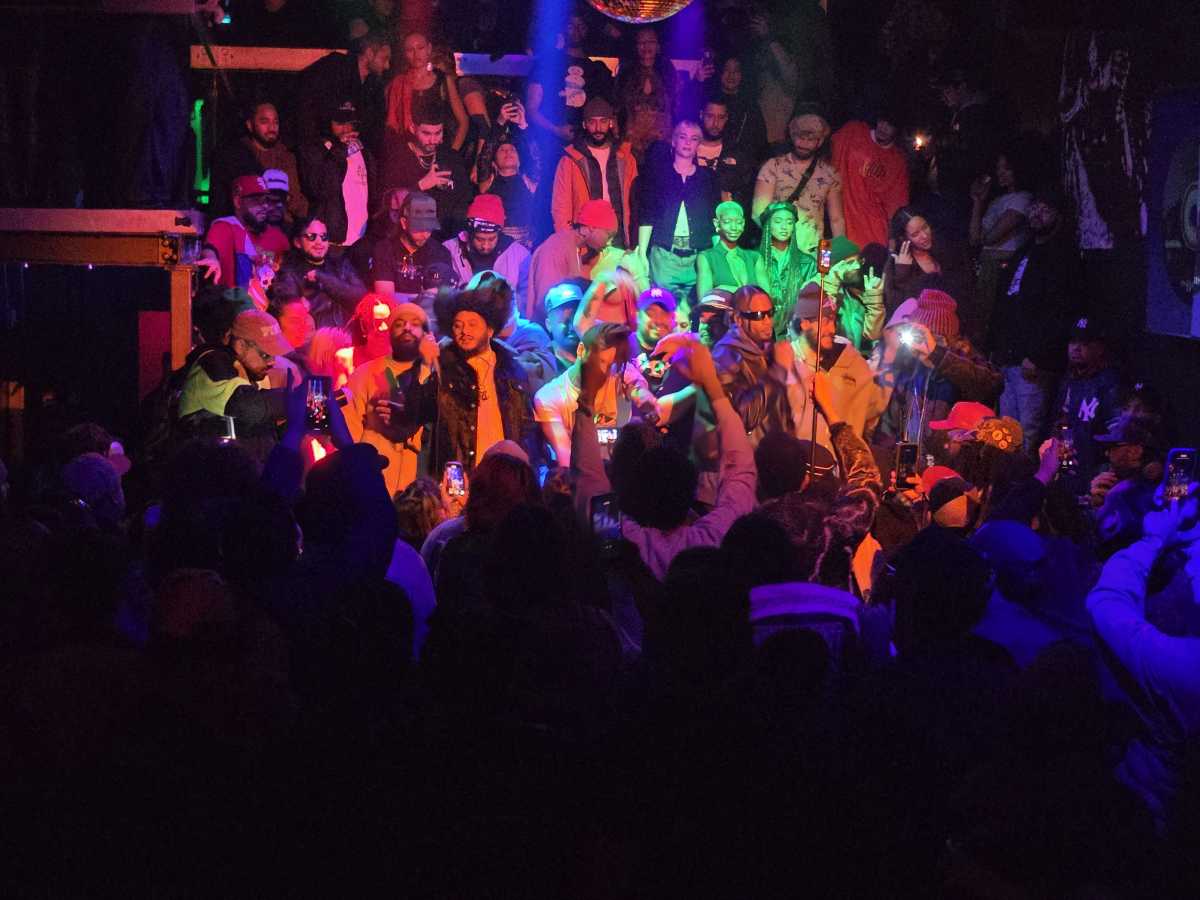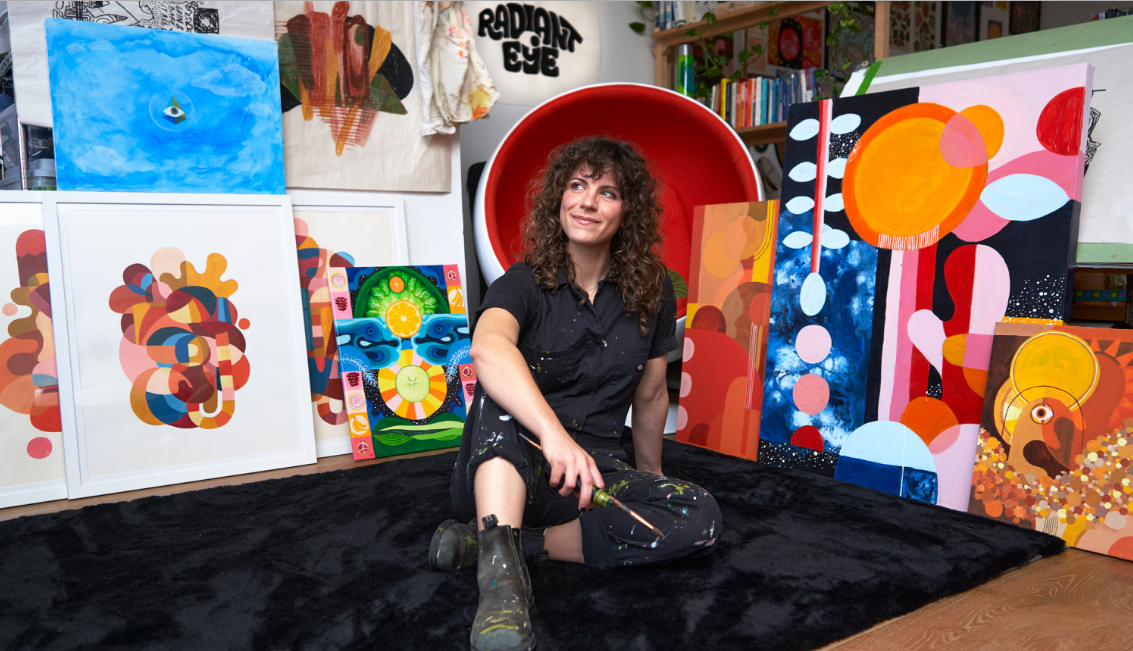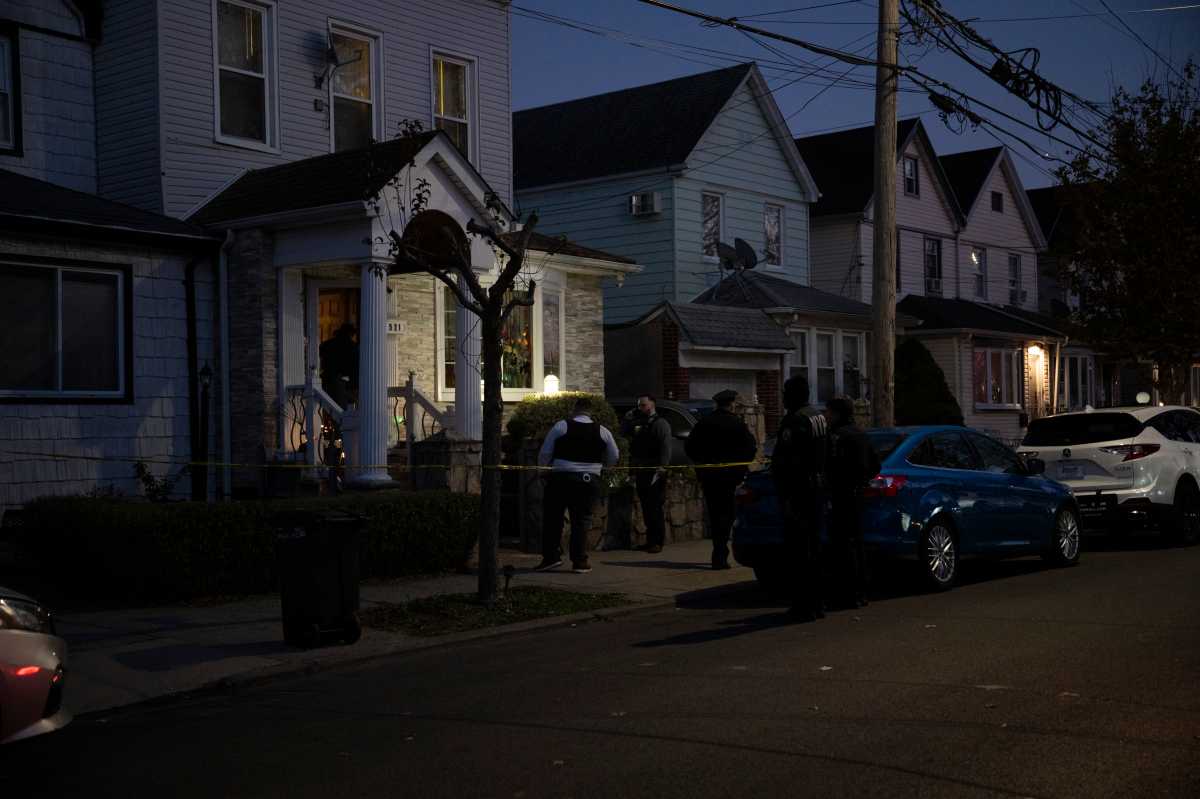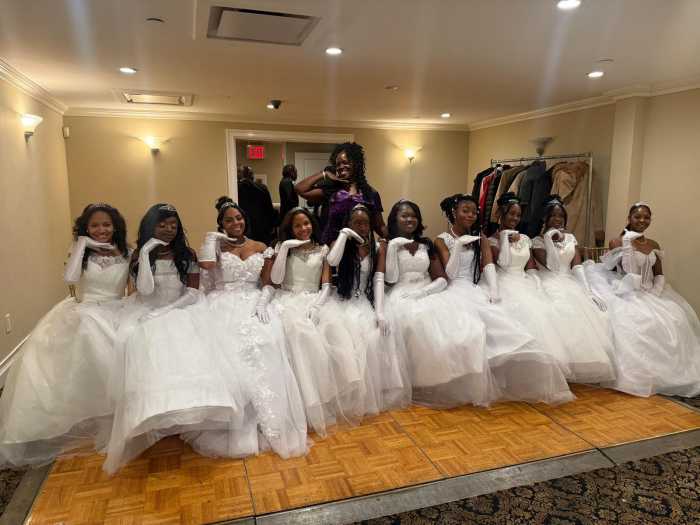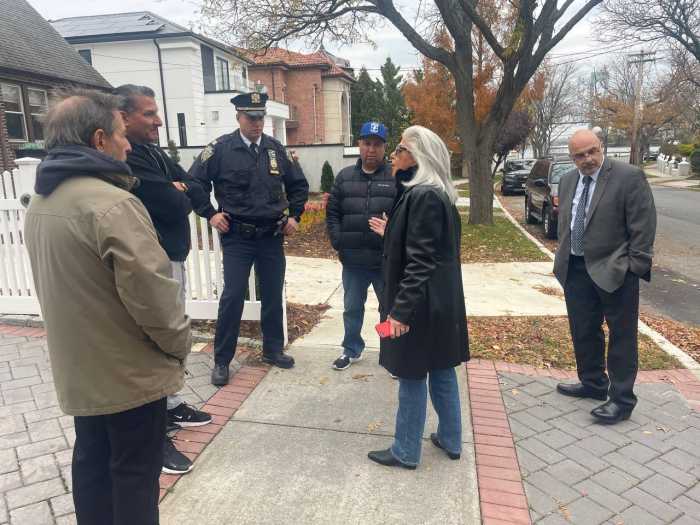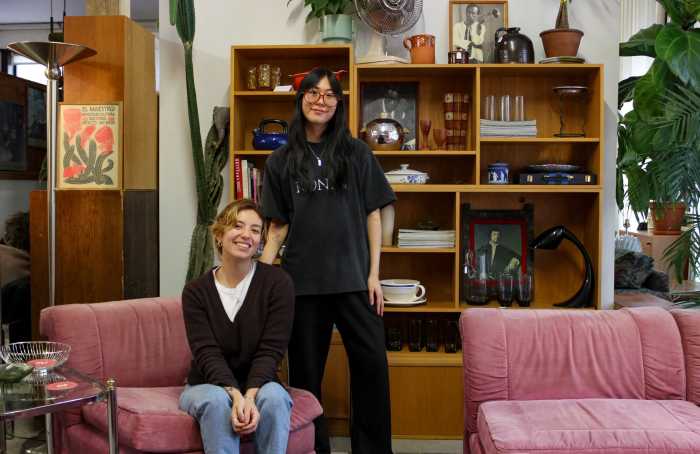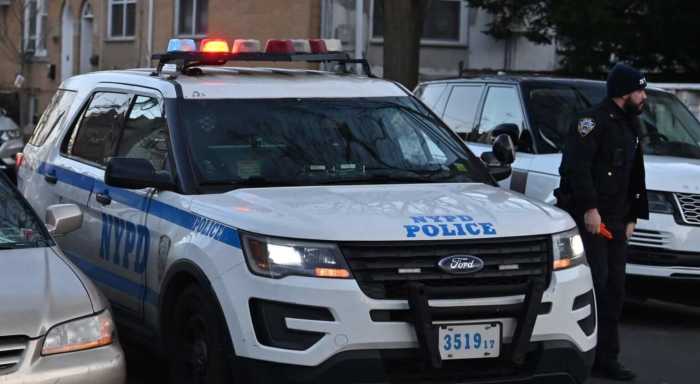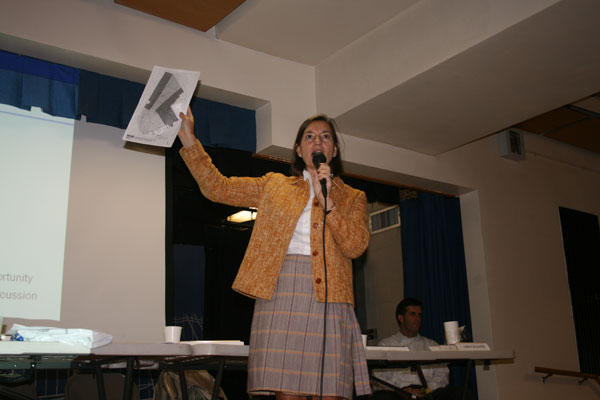 [/media-credit]
[/media-credit]
The time has come, however, for the artists to vacate their beloved studio space due to the recent acquisition by global investment firm M.S.C.I., which signed a 20-year lease in September for floors 47 to 49 of 7 W.T.C. With the the M.S.C.I. lease, Silverstein’s state-of-the-art tower has reached full occupancy. The six artists that have set up shop in the makeshift studio can remain there until the new year when M.S.C.I. will begin laying out its offices starting in January. The firm expects to move into the space by mid-2012, according to Dara McQuillan, senior vice president of marketing and communications at Silverstein Properties.
“We did have a lot of success with the program — not just with artists but with photographers documenting the [W.T.C.] site for many, many years,” said McQuillan at last month’s Community Board 1 World Trade Center Redevelopment Committee meeting.
Since the building opened in 2006, the 48th floor has been used for C.B. 1 meetings, P.S. 89’s “Rafflemania” and other community fundaisers, as well as photo, television and film shoots — some of which will continue to take place on the 10th floor, Silverstein’s marketing center.
“If we’re approached by the right organization,” said McQuillan, “we’ll happily work with them to make whatever event they want to do there a success.”
Meanwhile, McQuillan is hoping to help the artists find another temporary studio at the site or elsewhere in the neighborhood, since “we risk having this interruption in the way the projects are being documented,” he said.
Silverstein said of the forthcoming transformation of the 48th floor, “Art played a hugely important role in the city’s catharsis after 9/11…I was thrilled to be able to provide space at the top of 7 W.T.C. to [all of the artists]. They have each done an incredible job documenting not only the skyline of New York, but the new skyline of a rebuilt World Trade Center.”
Representational artist Todd Stone, for one, is racing against the clock to complete three of his large oil paintings — two that illustrate 1 W.T.C.’s glass curtain wall and its kaleidoscopic reflections; and one that depicts ant-sized visitors strolling around the National Sept. 11 Memorial plaza from the vantage point of the the 7 W.T.C. studio, which rises 650 feet into the air.
“It’s been an unbelievable opportunity to be there as the 9/11 Memorial took shape in the rush to the 10th anniversary of 9/11,” said Stone.
While at the studio, Stone also completed his series, “Witness / Downtown Rising,” a collection of 20 watercolor paintings that chronicle Lower Manhattan’s shifting skyline since 9/11.
Stone, who painted the events of Sept. 11 from his fifth floor walk-up apartment on Thomas Street in Tribeca, feels privileged to have had what he calls a “God’s-eye” view of the site while working in Tower 7 since 2009.
As a longtime Downtown resident having endured 9/11, painting in the “jewel” of studio space, Stone said, proved to be an especially cathartic experience.
“I never thought I’d feel anything but sad walking Downtown,” said Stone. “When I walk up to the 48th floor, it makes me feel good. I’ve reconnected here with the great strength and resilience of the city.”
And, even though he hasn’t yet secured a new work studio for the new year, Stone is resigned to vacate the place he has worked so intensively in for the last six months.
“The day was always coming,” he said of leaving Tower 7. “I’m being blown out of there, and there’s nothing I can do about it, but I’ll land on my feet.”
Former Downtown financiers Robert and Victoria Zoellner purchased Stone’s pieces from “Witness / Downtown Rising” with the intention of putting the art series on public display, according to Stone.
“My goal is for it to be a traveling exhibit hosted by the [National Sept. 11] Memorial, so the story could be told around the country,” said Stone.
Prior to working in the 48th floor studio beginning in 2006, Marcus Robinson, an urban-focused painter, videographer and photographer, documented on canvas and camera the construction of Tower 7.
Little did Robinson know that his subject would become the artist’s full-time workplace a few short years later.
Robinson’s W.TC. film, “Rebuilding,” brings the Ground Zero construction zone to life with a slideshow of animated drawings and time-lapse footage of workers in action.
“The film essentially wants to champion the spirit of the working people — something quintessential in all of us,” mused Robinson. “It’s like an ancient tale about the amazing spirit overcoming adversity, and setting it against the backdrop of something like the Great Depression.”
The 9/11 Memorial and Museum commissioned Robinson to do a film installation, “Tribute in Light,” for its permanent collection — which will be on view at the museum following its opening next fall.
Robinson hopes to find homes for “Benediction” and his other large-scale paintings in lobbies of Lower Manhattan buildings, but hasn’t yet reached out to interested parties to realize his wish.
“Part of the excitement is not totally thinking of the end result, but just enjoying the process of drawing and painting,” said Robinson.
Robinson, who lives in an apartment that overlooks the W.T.C. site, has his eyes on a ground-floor, live-work apartment on Washington Street. Asked what he felt of parting ways with space in 7 W.T.C., Robinson replied, “I’m quite a nostalgic person, but I think it’s good to be in the flow of life.”
However no conventional artist studio, Robinson admitted, could create the same, visceral effect as does the raw, unadulterated concrete walls of his current studio space.
“Marks like this inspire me for the painting,” said Robinson as he glided his fingers along a surveyor’s mark etched into the concrete wall of the 48th floor. “This space is, beyond any shadow of doubt, I think, one of the most amazing spaces in the world.”
